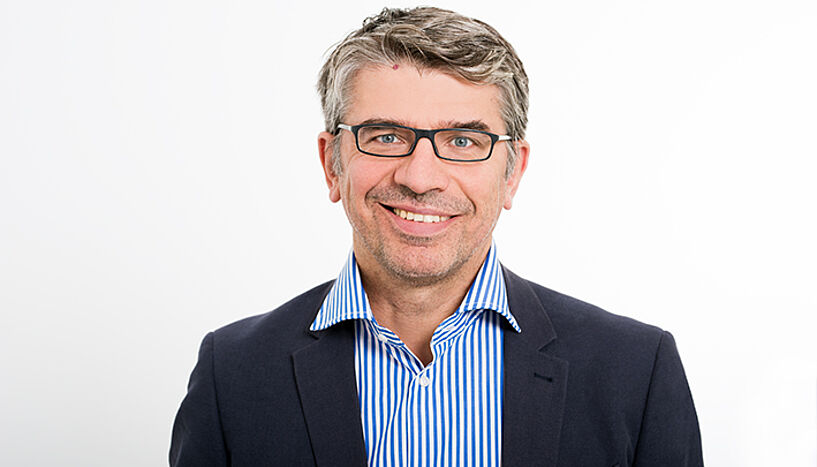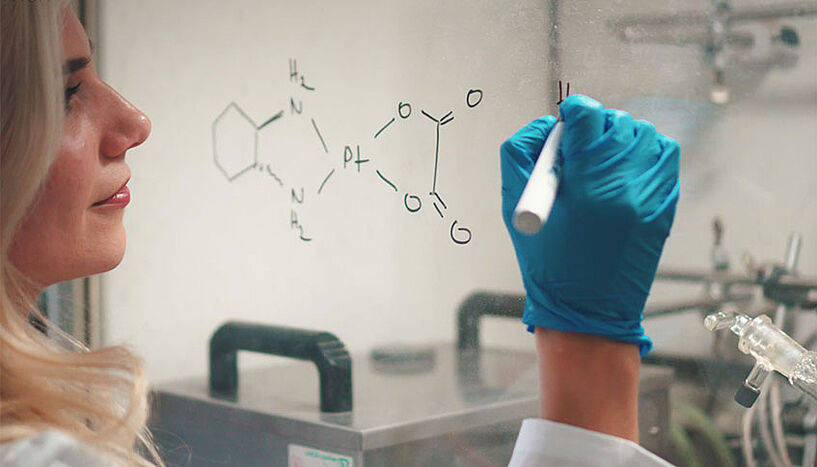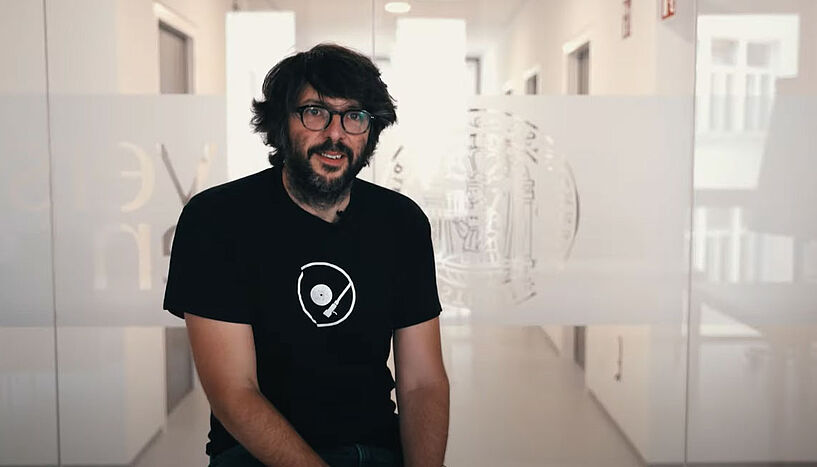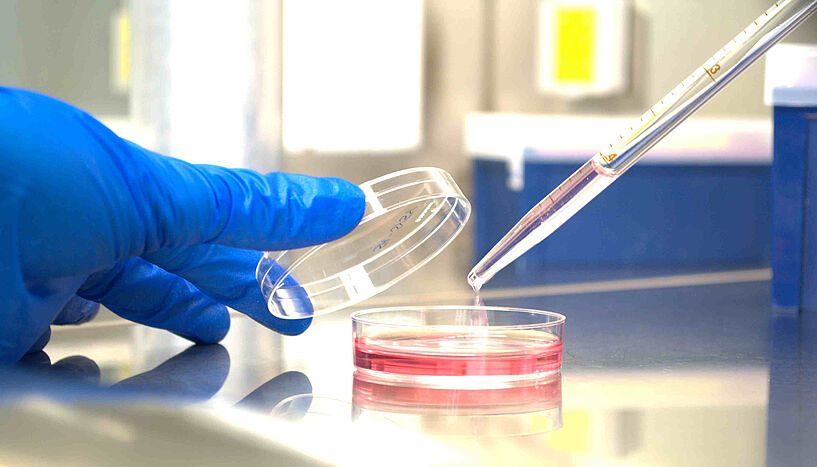Davide Bonifazi: A colourful chemical world
| 20. September 2021
Davide Bonifazi is conducting research in the field of organic supramolecular chemistry. His inaugural lecture will take place on September 30th. (© Barbara Mair)
On September 30th, the Faculty Day Chemistry 2021 will take place and Davide Bonifazi from the Institute of Organic Chemistry will give his inaugural lecture on "colours". He will explain how features that control the colouring of dyes and pigments can be harnessed for technological applications.
uni:view: Why did you decide – after many years at the University of Namur and the Cardiff University – to come to the University of Vienna?
Bonoifazi: While cherishing my origins, I always felt citizen of a one-Europe nation, threaded upon the distinctiveness and uniqueness of its constituents, determining its condensed richness of cultures, ideas, innovation, art in all its forms, as nowhere else in the world. So, the chance of moving right to the heart of Europe, working in one of its most established and prestigious German-speaking universities really resonated with me. Plus: Vienna is a wonderful city, with a lot to offer, and which I look forward to getting to know better in the years to come. So far, I could not be happier with the decision made.
uni:view: How would you describe the University of Vienna?
Bonifazi: If I had to choose three words to describe the University of Vienna, these would be: solid, supportive and challenging. Solid like the structure of its grand imperial buildings, and the reputation of the academics that contributed to its prestige before me. Supportive not only in terms of services and infrastructure, but also in the possibilities offered to the new academics, young and more experienced, to start off their activities, and aim always at bigger goals. Challenging because of its sparkling, curious and thought-provoking academic community (students included), that encourages you to be the best version of yourself, as a teacher, as a colleague and researcher.
On September 30th the Faculty Day Chemistry 2021 will take place in the Carl Auer von Welsbach Lecture Hall. Davide Bonifazi from the Institute of Organic Chemistry will give his inaugural lecture. In addition, you can again expect a colorful array of flash talks by new professors and research groups. We are also pleased to have the opportunity to present the "Golden Doctoral Diploma" to six colleagues on the occasion of the 50th anniversary of the award of their doctorate.
Registration by September 24 is mandatory. Register now!
uni:view: What will your inaugural lecture be about?
Bonifazi: It will be focused on "colours", discussed not only from the chromatic standpoint, but also on how features that control the colouring of dyes and pigments can be harnessed for technological applications. I have always been fascinated by colours: as a child I was trying to understand where the colour of plants and flowers was coming from and what their function was, trying to mechanically extract them from leaves and petals. As a chemist, I later got the chance of designing the molecular architecture of dyes and prepare a chromatic rainbow starting from atomic components. Not only these compounds are beautiful to look at, but mimicking what happens in nature, they can perform enabling functions that can be harnessed in devices with unprecedented capability. For example, these can be employed to collect and transform solar energy into a fuel (as it happens in photosynthesis).
uni:view: Your research activities focus on creating functional organic architectures – can you give another example that shows the impact of your research topic?
Bonifazi: I am conducting research in the field of organic supramolecular chemistry, in which we take advantage of the molecules' ability to self-assemble into bigger architectures, leading to an ultimate function. In synthesising and preparing molecules and bringing them together, we are trying to bridge the organic synthesis of molecules and complex matter in order to understand how to create and control complexity through non-covalent interactions, because final properties are based on complex systems most of the time. Efficient light-adsorbing architectures are one example. The molecules of a plant absorb the light (photons) in the visible range and transform it into energy used to produce sugar or other nutrients. In the scientific field of energy harvesting, researchers aim to derive chemical energy from systems that mimic natural light-harvesting processes such as photosynthesis and store this energy, e.g. in solar fuels or electronics.
Follow your passions, nurture your curiosity, understand your talent and work hard!
uni:view: What is important for you in teaching? Do have any recommendation to your students?
Bonifazi: Many of chemistry's most significant opportunities for contributing to human progress will interface with other subjects. The fundamental scientific problems and the challenges (sustainability, energy production, fighting new diseases, inequalities, food) that the world faces are complex and often require cross-disciplinary solutions. Working effectively across disciplines does not come automatically. It requires skills (including communication between different scientific fields, thinking outside the box, intellectual flexibility, summarising information of diverse kinds and natures, working in teams) that should be taught early in education. Although remaining rooted in the solid fundamental teaching of the discipline itself, students also need to be exposed to cross-disciplinary research topics, methodologies and approaches. Four recommendations to my students: Follow your passions, nurture your curiosity, understand your talent and work hard!
uni:view: Thank you for the interview! (hm)
Downloads:
UW_20210930_Antrittsvorlesung_Bonifazi_Organische_web.pdf
Dateigröße: 473,3 KB



